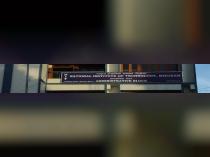What rank should I get in JEE Main to crack NIT Mizoram for BTech admission?
-
1 Answer
-
NIT Mizoram BTech admission is based on JEE Main ranks. Tabulated below are the CSAB SR1 closing ranks for NIT Mizoram cutoff 2022 along with 2021 and 2020 for the General category students, to get clarity on past year trends:
CSAB Special Round 1 Closing Ranks: General (OS)
Specialisation
2020
2021
2022
Computer Science and Engineering
36,231
38,593
37,563
Electronics and Communication Engineering
43,397
54,411
54,574
Electrical and Electronics Engineering
50,503
68,818
61,918
Mechanical Engineering
44,103
76,835
76,765
Civil Engineering
63,372
81,531
81,399
Read more: NIT Mizoram Cutoff
Similar Questions for you
Who work on the rocket-propelled vehicles, they apply the principles of Mathematics, Physics, and Material Science to solve challenges related to these vehicles. Rocket Scientists are involved in the process of design and development of the vehicles such as small drones, satellites, and commercial aeroplanes.
Yes, this field is considered hard. It is complex and demands high precision. There can be extreme consequences for minor errors. The overall field is extremely challenging as it requires to apply the basic scientific principles to design and develop rockets. It requires sophisticated engineering with careful material selection, and allows narrow margin for error.
The following are the qualification which can help you to become a rocket scientist:
· Bachelor's Degree such as B.Tech/B.E can take up to four years to complete.
· You can do a two years Master's Degree M.Tech/M.E./M.S. after graduation.
· For advanced level study in this field, you can also do Ph.D and Research.
Well, becoming a rocket scientist is a long-term commitment, and it depends on your education path and goals It takes almost 5 to 6 years with a bachelor's and 8 to 12 years if you want to study higher. Here below is how long it usually takes:
- Bachelor's degree: You have to study aeronautical engineering, aerospace engineering, mechanical engineering or physics. This usually takes almost 4 years.
- Master's degree: this is almost optional, but it will help you specialise in rocket science, propulsion or space technology. This usually takes 2 years more.
- PhD: this is optional for a research job; if you want to do high-level research, then it
Can you please confirm what you mean by “2027 mock test” — do you mean:
- BPSC 2027 Mock Test Series (for your upcoming exam prep)?
- Or a general mock test for 2027 government exams (like UPSC, SSC, Banking, etc.)?
- Or are you referring to a specific subject/year 2027 question paper mock (e.g., “BPSC 2027 Prelims Mock Test”)?
Taking an Exam? Selecting a College?
Get authentic answers from experts, students and alumni that you won't find anywhere else
Sign Up on ShikshaOn Shiksha, get access to
- 65k Colleges
- 1.2k Exams
- 678k Reviews
- 1800k Answers

